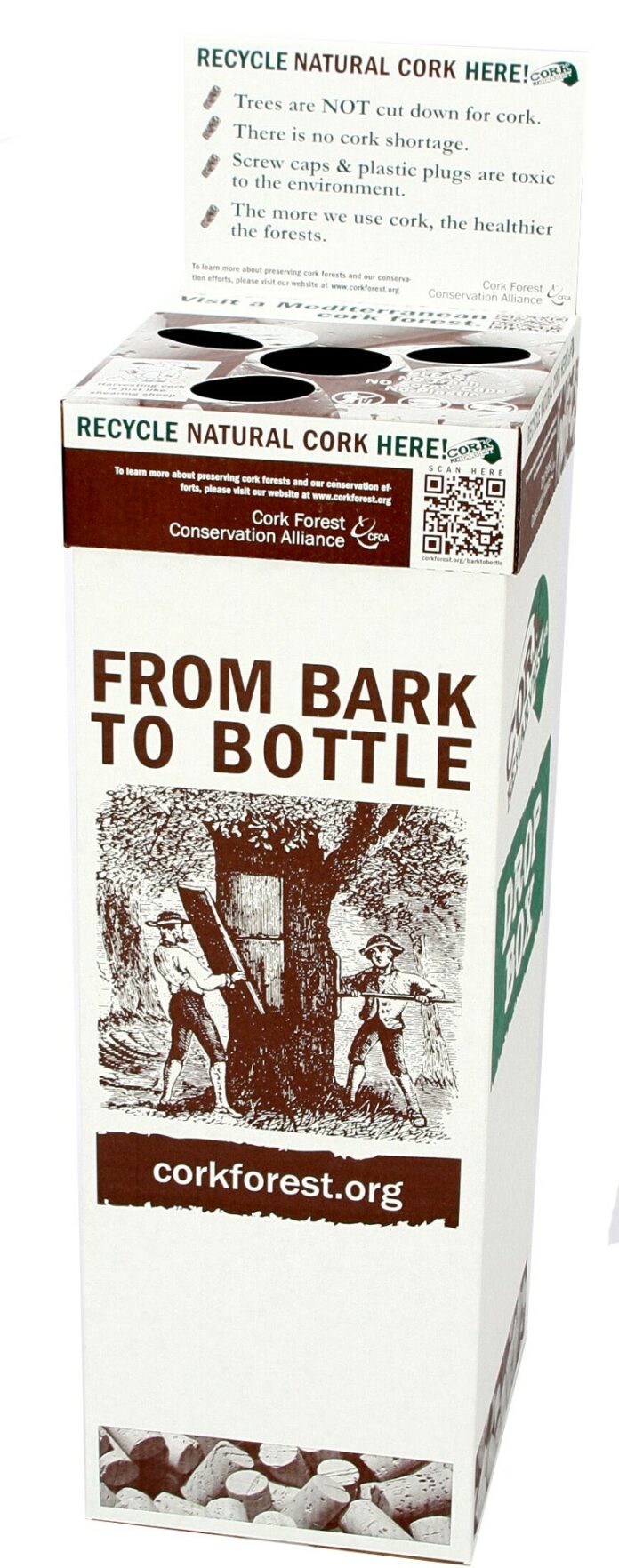If you’ve been putting off that crafty cork-board project until the kitchen drawer is overflowing with wine corks, you’ve got company, according to Patrick Spencer, executive director of the Cork Forest Conservation Alliance.
Spencer says the alliance discovered, when rolling out a recycling program nine years ago, that most people don’t throw away their corks. “We were astounded at how many people would say, ‘You know, I just don’t feel good throwing them away. I guess I could make a cork board, but . . .'” Tossing a metal screw cap or “faux” plastic cork into the trash seems sensible. But a cork, like the elixir it kept genied inside the bottle, is a product of a living thing—it’s the bark of an oak tree that can live up to 300 years—and seems a shame to waste. Good news: instead of gluing endless corks to boards, cork hoarders can drop off their stash on their next visit to Whole Foods, which hosts a Cork Forest recycling program, or at winery locations like J Vineyards, which partners with Canada-based ReCORK.
J will even hand over a box of corks to individuals whose arts and crafts projects scale beyond their ability to consume cork-stoppered wine. But while “recycle” and “reuse” are covered, “reduce” is not part of the program: no new wine corks are made out of recycled cork—not even the composites often used in less expensive wines. It’s counterintuitive to the way we think about most recycling: instead of using less of the resource, we are encouraged to drink more.
“There is no cork shortage,” reads a bullet-point emblazoned on Cork Forest’s cardboard bins, along with the message, “Harvesting cork is just like shearing sheep,” under a cute sheep cartoon. Too much—is Big Cork behind this, or what?
Based in Salem, Ore., Cork Forest caps industry funding at
1 percent, says Spencer, as they don’t want to appear to be lobbying for the industry. “Our primary purpose is not recycling the cork, but preserving the cork forest.” Spencer explains that cork plantations rank highly in biodiversity—Cork Forest even runs eco tours to Spanish cork-producing regions. Each cork absorbs nine grams of carbon “bark to bottle,” according to Spencer, who says the manufacture of alternative enclosures made from aluminum or plastic leads to more environmental cost than is acknowledged by those who tout them.
Just tossing that cork, and that stored carbon, in the kitchen trash isn’t the worst thing after all, Spencer allows. “It’s not a bad thing in the ground. It’s a piece of wood.”
Find Cork Forest drop-boxes at Whole Foods markets or visit corkforest.org. More information on ReCORK partners and recycled cork products (yoga boards and insoles) at recork.org or yoursole.com.











